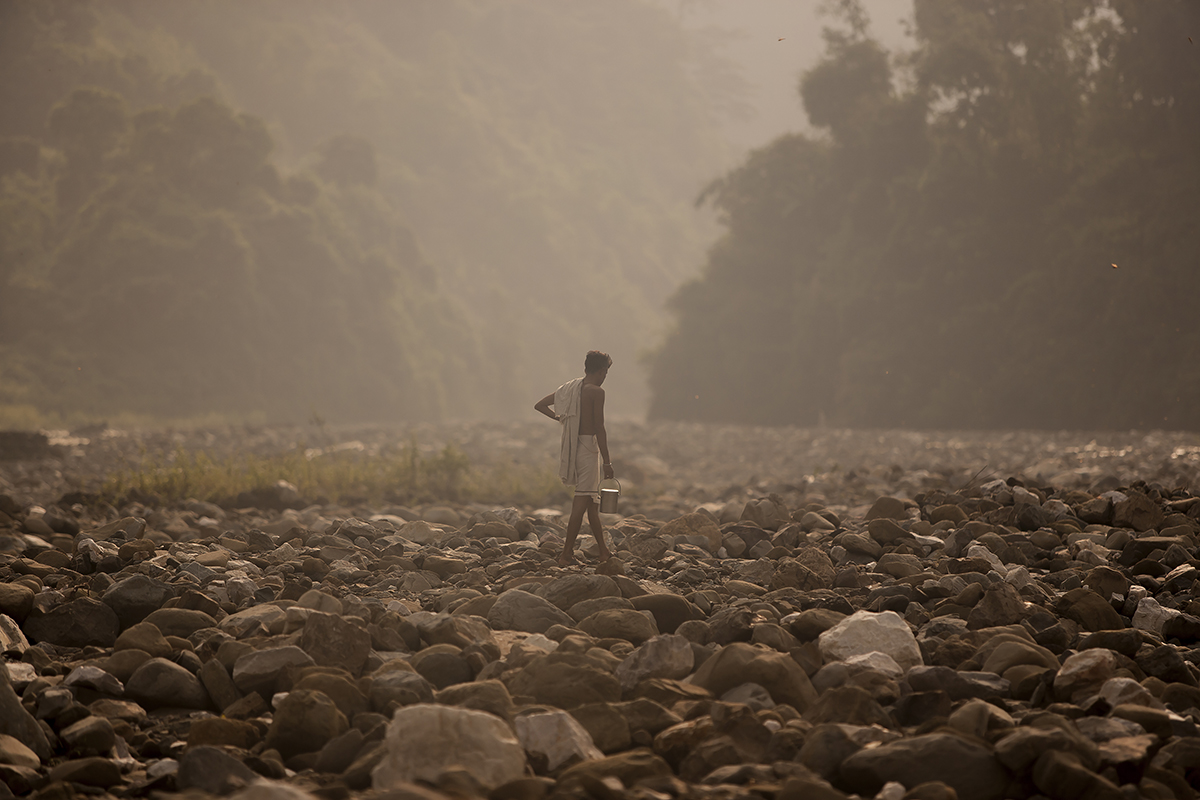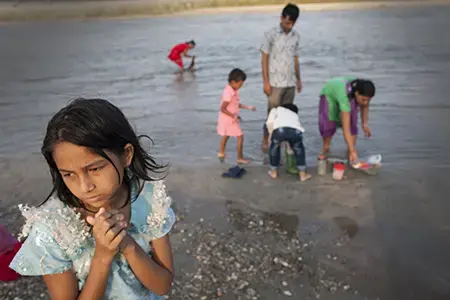Thousands of miles and many decades removed from where a group of indigenous people in Nepal are claiming their right to land and culture, a body of the United Nations known as the International Labour Organization (ILO) revised an agreement that preserved the rights of indigenous people worldwide.
Evolving from the Indigenous and Tribal Populations Convention No. 107 in 1957, a new agreement was ratified in Geneva in 1989. Known as the Indigenous and Tribal Peoples Convention No. 169, or ILO 169, this new agreement paved the way for them to determine their own future: "The peoples concerned shall have the right to decide their own priorities for the process of development as it affects their lives, beliefs, institutions and spiritual well-being and the lands they occupy or otherwise use, and to exercise control, to the extent possible, over their own economic, social and cultural development."
Which is to say, each government, and in this case Nepal's, must take special measures to safeguard the persons, institutions, property, labor, cultures and environment of the people affected by the proposed Kosi High Dam. Such is the task of the Joint Commission Office located in Biratnagar, Nepal.
Established in 2004 by Nepal and India, the office conducts a wide range of studies for the proposed dam, including environmental impact, irrigation, hydrology, ecology and the development of topological maps.
Pravan Aryal, project manager of the Joint Commissions Office for the Nepal side, said aside from these studies one of the main purposes of his office is to assist the indigenous people in finding the most beneficial outcome for them, whether it be culturally or economically.
"We have to have a compensation plan, a relocation plan and a community redevelopment plan," he said.
If the dam is built, they expect to submerge approximately 215 km2 of land, affecting thousands of people in approximately 80 villages.
"Before resettling the people and before taking the [proposed high dam] project to the Sunsari District [one of eight districts within the affected area] we should hear them," Aryal said. "We need to hear them."
"The government needs to talk to all the people in these areas and make them happy and they need to agree on this issue," said local villager Ganesh Bahadur Rai.
"And we should be guaranteed and reassured that we will get the right amount of compensation of our land," he said. "Then only we will let this dam be built."
The concerns raised by local villagers about the proposed high dam, such as compensation, relocation, education for their children, and loss of their culture, are the same concerns the Joint Commissions Office is obligated, under ILO 169, to investigate and thus, create a Detailed Project Report about it.
Paradoxically, it is this detailed study that the local people are continuously thwarting through protest, preventing any dialogue about their concerns. The last known protest occurred in June 2013.
"The local people, they are not sure what will be the total benefits from the project," Aryal said. "It is quite natural that they see only the negatives because they are the one who are mostly affected."
"There is doubt and fear," he said. "We are trying to convince them to let us finish the study first."
"If the Kosi High Dam is built the government should take responsibility for the people, where to keep the people," said local villager, Shankar Prasad Tamang. "But the government has not done these things. They are not talking about it so we don't know."
Aryal said one way the Joint Commissions Office is trying to reverse that fear and convince the local people is through outreach programs. Throughout the Sunsari District, flyers are displayed and public meeting announcements are published in local newspapers. At these meetings experts from different government branches and universities speak about the impact of the proposed dam and how individuals will be affected. The meetings are designed to give voice to local concerns.
Yet, no meeting has yet to be held in 2013, and only four were held the previous year.
"It will not be finalized," he said. "Unless we have instruction from the local people directly."
And until they can get the locals to consent, the future of Nepal's energy production and economic development, and India's, is uncertain. According to studies done by the Joint Commissions Office, approximately 3,000 MW of electricity will be created from the dam, while managing flooding on the Kosi River and irrigating millions of hectares of farmland.
To leaders within Nepal, it is a case of what is best for the 27 million residents in Nepal and for the country at the cost of a few thousand mountain residents. The greater good for the greater number.
But political instability prevents any sort of consensus among residents, let alone the people affected.
With general elections expected on the national level this month, there is hope this will change.
"As long as there is no consensus among the political parties," Aryal said, "then we cannot expect consensus among the local people."
With suspicion among the indigenous people and political instability, it may be years before the project even begins. Small steps are necessary.
"To the indigenous people who resent the dam," Aryal said. "Let us finish the study first."

































